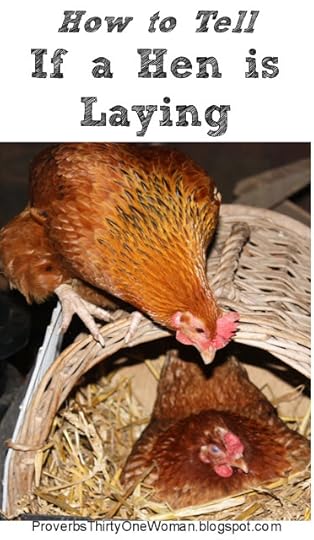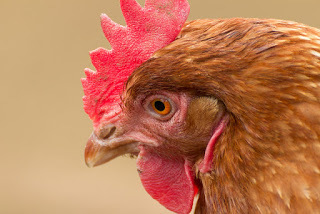How Can I Tell If My Hen is Laying?
 Q: I'm not getting very many eggs from my hens. I have 8 that are about 3 years old and 9 that are about a year old, and I only get 9 eggs a day. I know the older hens are past their prime, but how can I tell which ones (if any) are still laying?
Q: I'm not getting very many eggs from my hens. I have 8 that are about 3 years old and 9 that are about a year old, and I only get 9 eggs a day. I know the older hens are past their prime, but how can I tell which ones (if any) are still laying?A: You're right that you should be getting more eggs. I expect one egg per hen per day (on average) and don't put up with much less. Slackers have gotta go! Fortunately, there are several ways to determine which of your hens are good layers and which are not.
1. Check the Vent. The first thing I do is take a good look at each hen's vent (the hole where her eggs come out). Good layers usually have large, oval, moist openings. Poor layers have smaller, rounder, drier vents. I believe this is the best way to tell a good layer from a bad one (aside from separating each hen and watching her daily).
2. Check Color. For chickens that have yellow-pigmented beaks, legs, and skin, the vent of a good layer will typically look pale. If the hen is not laying, the vent should be yellow. (This is because there's a limited supply of yellow pigment in a hen's body, and if she's laying, she needs that pigment for her egg's yolks.) Good laying hens of all breeds also have bright combs and wattles. A hen who is not laying will have a paler "complexion" on those body parts.
3. Check the Abdomen. Lay each hen on her back (as if you're cradling a baby in your arm), and gently feel her abdomen. If her it's pliable and soft, she's probably laying eggs. If it's not very flexible, she's probably not laying eggs. This test isn't foolproof because if the hen has an egg forming, her abdomen will feel harder.
 Comb and wattle color matter. (Courtesy of Anup Shah)4. Check the Bones. While you're at it, take a feel at her pelvic bones. If they are far apart (say, 3 or 4 of your fingers fit between them), she's probably laying. If there's a more narrow space between them, she's probably not laying often. You can also look at the space between the hen's vent and keel (the pointy bone at the base of her breast). If you can fit about 4 fingers between the vent and keel, she's probably a layer. Less distance means the bird probably doesn't lay well. (These measurements only work for full sized breeds.)
Comb and wattle color matter. (Courtesy of Anup Shah)4. Check the Bones. While you're at it, take a feel at her pelvic bones. If they are far apart (say, 3 or 4 of your fingers fit between them), she's probably laying. If there's a more narrow space between them, she's probably not laying often. You can also look at the space between the hen's vent and keel (the pointy bone at the base of her breast). If you can fit about 4 fingers between the vent and keel, she's probably a layer. Less distance means the bird probably doesn't lay well. (These measurements only work for full sized breeds.)5. Check for Appetite and Activity. Although activity levels vary from breed to breed, generally speaking, hens who are laying are usually more active than those who are not. They have an active appetite, too, and tend toward eagerness when you supply food. Hens who aren't laying, aren't nearly as eager and won't eat as much as laying hens.
* Cover image courtesy of Tamsin Cooper
Published on June 05, 2018 05:00
No comments have been added yet.



